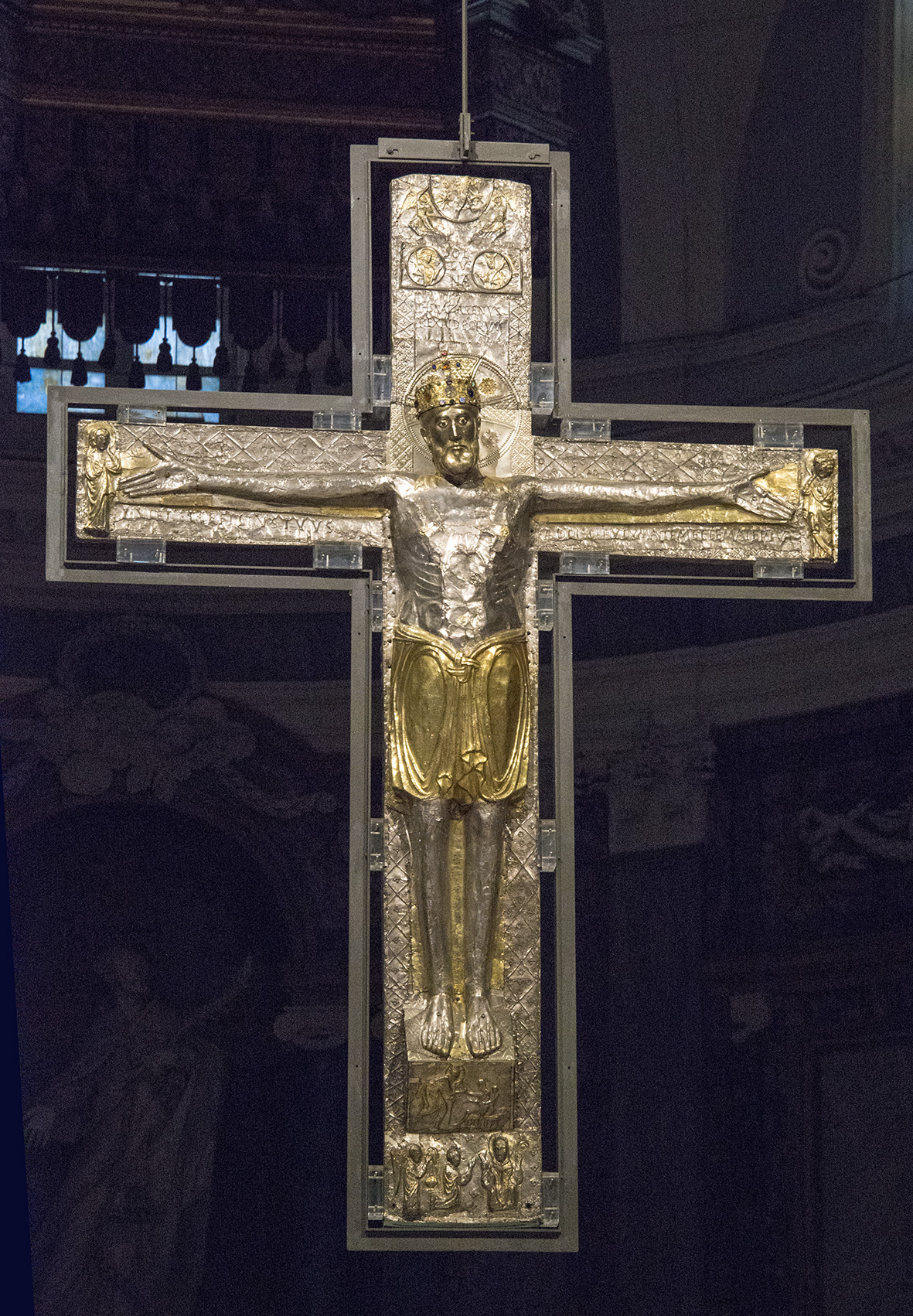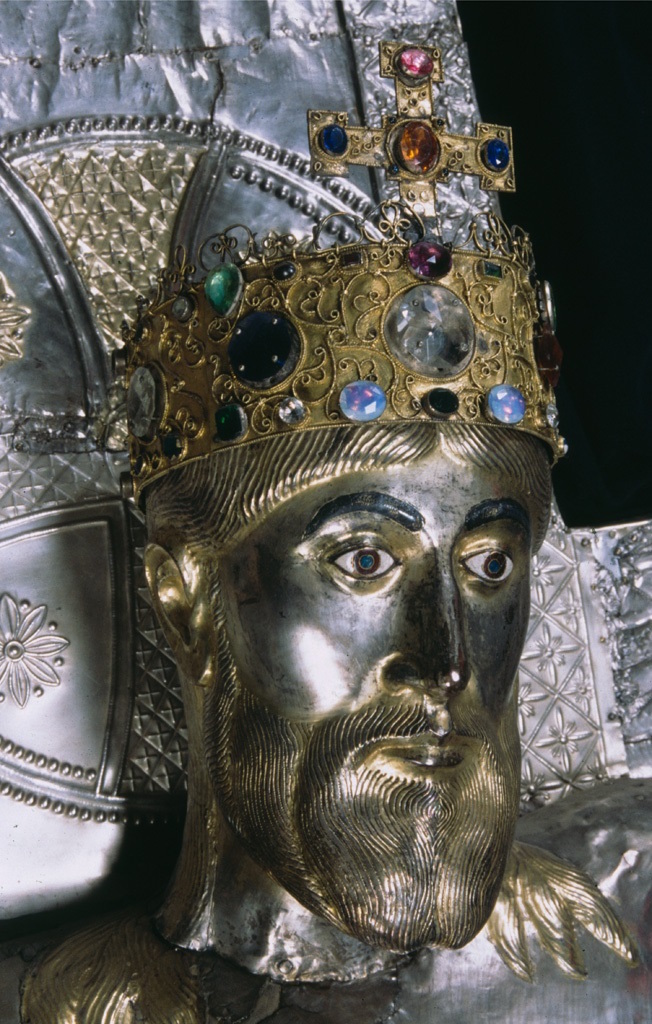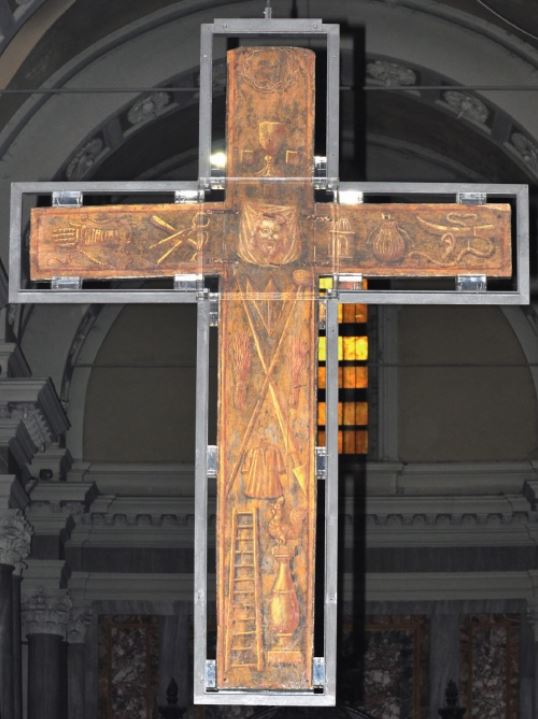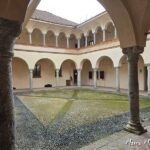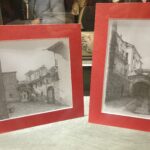The Vercelli Cathedral: What a Marvel! This sacred temple boasts a majestic example of the “Christus Triumphans”: an Ottonian Crucifix that defies conventions with its depiction not of pain, but of glory and royalty. This sculpture, an authentic treasure of religious art, evokes the artistic tradition of a victorious Christ, as seen in Byzantine art, before the Franciscan shift that later introduced the suffering Christ, the “Christus Patiens.”
With its impressive dimensions—3.27 meters in height and 2.36 meters in width—the Vercelli Crucifix is a unique piece, not only for its size but also for the mystery surrounding its origin. The absence of documents certifying its date and author leaves us imagining the stories that could surround this masterpiece. It is believed to date back to the episcopate of Leo (998–1026), but without certain documentation, it remains a fascinating conjecture.
We can imagine pilgrims on the Via Francigena, tired yet full of fervor, arriving in Vercelli, a cultural and political crossroads in the medieval era. Encountering this triumphant Christ, crafted with rare skill in gilded and embossed silver, would undoubtedly have left an indelible impression.
The art of the Crucifix reveals itself in its details: the representation of symbols of immortality at its peak, the Ascension and Descent into Limbo of Jesus at the bottom, down to the intricate details of the Passion Symbols, added about five centuries after the initial creation, showcase an artistic skill that conveys a profound theological message.
On the back of the Crucifix, almost contrasting its triumphant front, we find, painted in monochrome, the Symbols of the Passion of Christ. These details, a fascinating expression of sacred art, added around the late 1500s by a Vercelli art workshop, add a level of depth and reflection to the already complex figure of Christus Triumphans.
The symbols, from the crown of thorns to the chalice, from the hammer and tongs to the nails, passing through the sponge-tipped staff, Longinus’ spear, and even the peculiar knife and Malchus’ ear, speak an intensely evocative visual language. The glove, the ladder, the ropes, the bag with the thirty pieces of silver, and the rooster on a column all culminate in the central image of Veronica’s veil. This richness of symbolism, painted with such attention to detail, makes us reflect on the complexity of Christ’s figure in Christian tradition: on one hand, the regal and triumphant Redeemer; on the other, the symbol of sacrifice and human suffering.
The vandalism of 1983 was a blow to the hearts of art and history lovers. The damage to the precious silver plates, though tragic, led to meticulous restoration. This conservation work not only saved the Crucifix but also offered an opportunity to study and appreciate even more this artistic and historical treasure.
The Ottonian Crucifix of Vercelli Cathedral is not just an artistic masterpiece but also a silent witness to the changes in religious representation, the devotion of medieval pilgrims, and the resilience of art in the face of time and adversity. Its story is a fascinating invitation to reflect on the depth and richness of European artistic and spiritual tradition.

